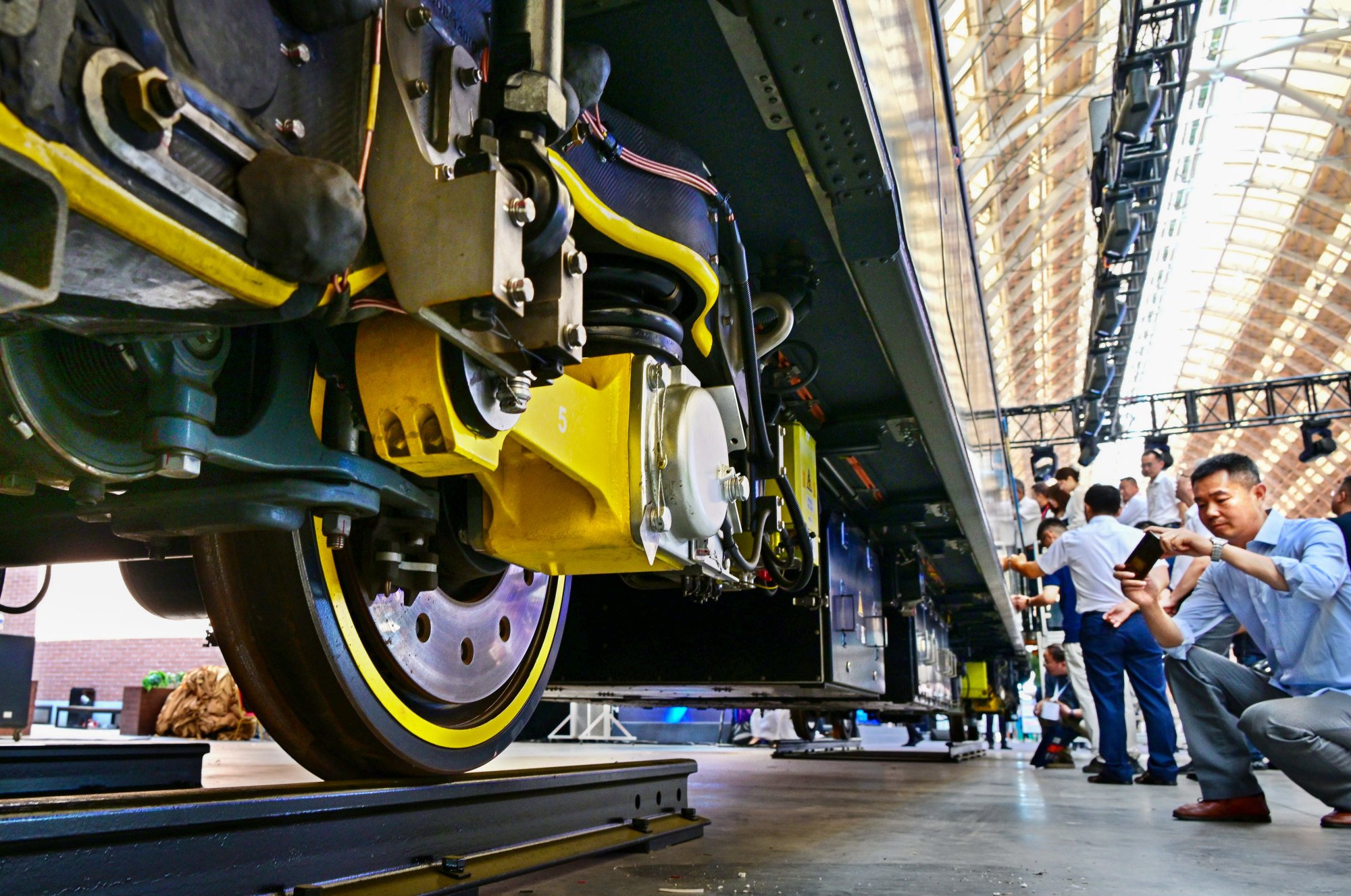World
World’s first carbon fibre passenger train ready to (quietly) roll into Qingdao

It has completed in-factory testing and is ready to go into operation in the coastal city later this year, according to its developer Qingdao Sifang Rolling Stock Co, a subsidiary of China Railway Construction Corporation.
The train’s main load-bearing structures – including car body and bogie frame – are built with carbon fibre composite materials, the company said. That makes its body and frame 25 per cent and 50 per cent lighter, respectively, than those of a conventional train.
Overall, it is 11 per cent lighter than a traditional train, and the company said energy consumption would be reduced by 7 per cent. That would mean a reduction in carbon dioxide emissions of about 130 tonnes a year – equivalent to planting more than 40 hectares (100 acres) of trees.
“In the field of rail transit, a key technology is to reduce the vehicle’s body weight and its energy consumption while ensuring vehicle performance towards a greener, low-carbon future,” Qingdao Sifang said on WeChat.
Cetrovo trains are designed with a top speed of 140km (87 miles) per hour – much faster than the current average speed of 80km per hour, state tabloid Global Times reported in 2019, when a trial run was completed in Qingdao.
It said the train, which is fully automated and driverless, can manoeuvre around curved or steep tracks and can operate in harsh environments such as high temperatures and altitudes.
Traditional metro trains are made of steel, aluminium alloy and other metal materials, and reducing their weight has been a major challenge.
Carbon fibre could be the answer. The lightweight yet super-strong material is made from thin strands of carbon atoms that are tightly woven together. It is five times stronger than steel but with less than a quarter of the weight, making it ideal for use in planes, sports equipment – and now trains.
The company said the reduced weight would mean significantly less wear on the wheels and tracks, making it cheaper to maintain, and it would also be a quieter journey for passengers.
It said the train had an intelligent anti-collision early warning system and an obstacle detection system, which could automatically send alerts and bring the train to a stop in an emergency.

The price of carbon fibre has steadily come down in the past few decades and it has gone from being a luxury material used mainly in aerospace to a more common material used in products such as cars and bicycles.
In the 1980s it cost about US$200 per pound (454 grams), and by the end of the 2000s it was down to US$30 to US$50 per pound. Today, prices for industrial-grade carbon fibre range from US$7 to US$15 per pound.
But carbon fibre remains relatively expensive compared to traditional materials like steel or aluminium, largely due to its complex manufacturing process and the cost of raw materials.
China Railway Construction Corporation is the world’s biggest rolling stock manufacturer. It won its first US contract in 2014 to supply metro trains to Boston. Founded in 1900 during the German occupation, Qingdao Sifang is one of the oldest rolling stock manufacturers in China.







